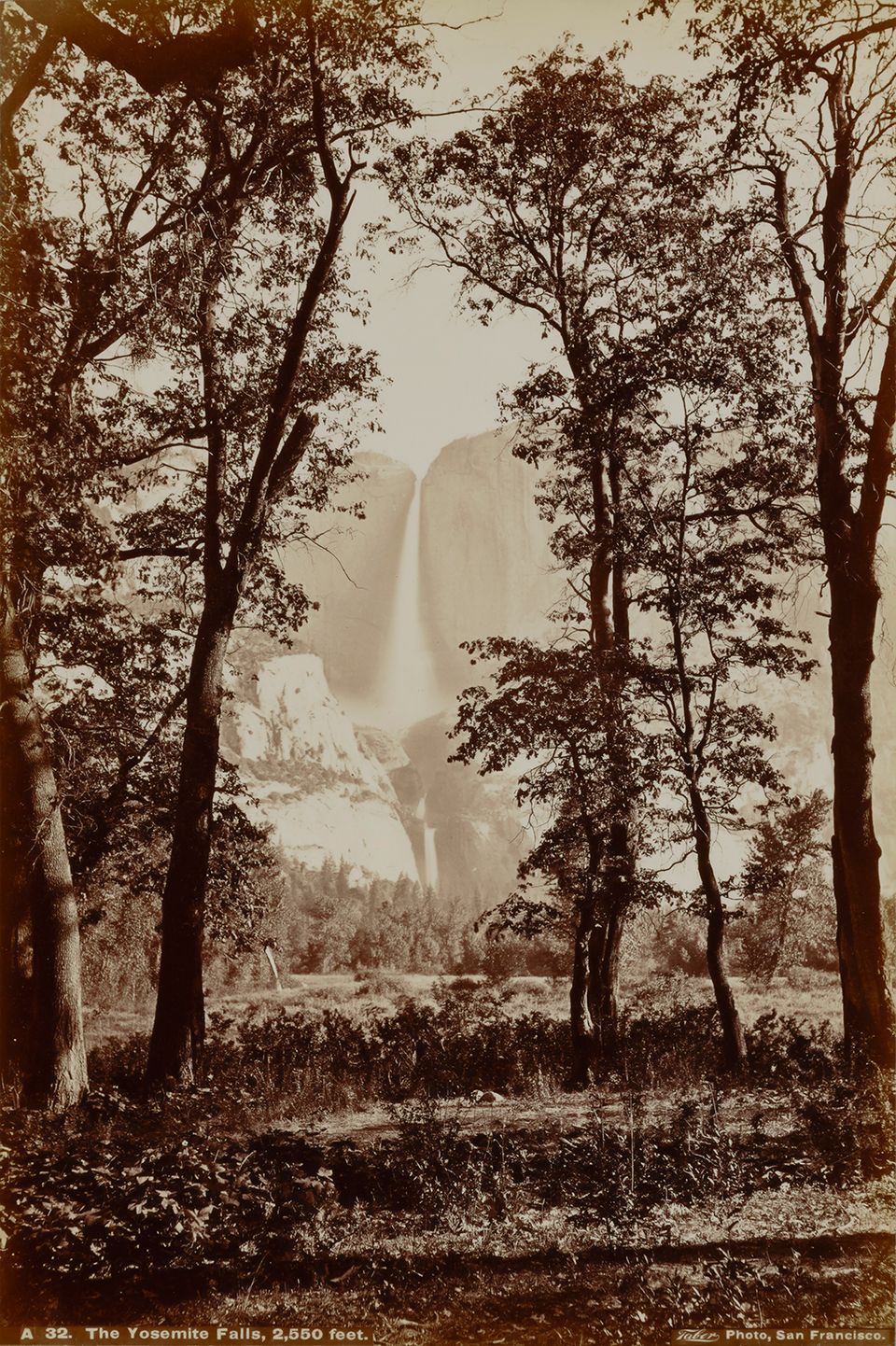
Carleton E. Watkins and Isaiah West Taber, Yosemite Falls, ca. 1865–66, printed after 1875, albumen silver print, 12 x 8 in., Smithsonian American Art Museum, Museum purchase from the Charles Isaacs Collection made possible in part by the Luisita L. and Franz H. Denghausen Endowment, 1994.91.282.
About this Artwork
Watkins established the canonical views of Yosemite, introducing this unique landscape to eastern audiences when his “mammothplate” photographs went on view in New York in 1862. The images of El Capitan and Cascade Falls are examples of those large- format photographs, made with a camera of Watkins’s design. John C. and Jessie Benton Frémont were major patrons of Watkins’s photographs, which they saw as symbolic of America’s commitment to freedom. Abraham Lincoln signed the legislation setting aside Yosemite as a federally protected landscape in March of 1864, in part in response to the power of these photographs. Watkins’s photographs were among the artworks that helped define this California landscape as a national icon associated with the cause of liberty during the American Civil War.













